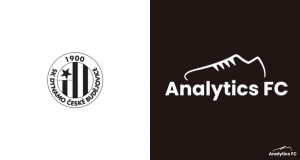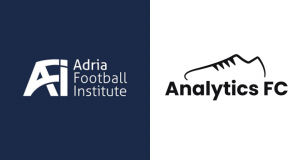As another transfer window rolls around, changes to the GBE banding system enforced by the English FA post-Brexit have opened up a new area for player recruitment. Alex Stewart takes a look
Post-Brexit, the FA’s GBE system has gradually been tweaked and refined. The points-based system, which effectively grants work permits for non-domestic players to play for clubs in England, Scotland, Wales, and Northern Ireland (each administered by their respective FAs with some differences), means that players wishing to move to these nations need to have played a certain number of international or domestic games at certain levels in order to qualify.
Each summer, it seems, new competitions are added to or removed from various bands, both leagues and continental competitions. And this summer sees quite a significant addition.
A-(New Band 5)League
Australia’s A-League has been upgraded to a Band 5 competition for the purpose of the FA’s GBE regulations. While the low number of points available mean that it is still unlikely that players can move directly on a full GBE, this does open up the ESC route for players to English clubs, subject to the club being joined having the requisite available ESC slot.
And this is very important, as we pointed out in a previous piece by James Nalton:
The points-based system will remain in use, but the FA has introduced what it describes as “a new football solution which works for everyone and provides additional access to exceptional international talent which falls outside the current GBE criteria.”
All teams in the Premier League, Championship, League One and League Two will be able to sign two overseas players who don’t qualify for a GBE via the points-based system. The criteria refer to these players as elite significant contribution (ESC) players.
On top of this, Premier League and Championship clubs have the opportunity to include two further ESC players (so a maximum of four in total) based primarily on the percentage of minutes they offer to English players.
More detail on those English player requirements and the requirements for a player to be considered an ESC player can be found here.
In short, overseas players or youth players who have played in competitive games at youth or senior international level, or have made at least five appearances in a Band 1-5 league, or have appeared in any continental competition, are likely to qualify as an ESC player.
So now, even if a player from the A-League wouldn’t qualify for a GBE, they would qualify as a Band 5 player for an ESC.
And another set of changes now makes this even more interesting to clubs. Conversion of ESC to GBE can now happen after the conclusion of the following transfer window rather than a full 12 months; in other words, a player bought in in the summer, having played enough games to gain the required points, can be granted a GBE in the following February. This means that clubs can use the ESC slot as a kind of holding pattern for players, granted that they fulfil the points criteria by the time the next window closes, and therefore refresh the players occupying those important ESC slots quicker.
This also, importantly, could erode an advantage that Scottish clubs have had: their less stringent requirements to bring a player before an exceptions panel had allowed Scottish clubs to shop more effectively in markets like the A-League, but the new Banding change, plus the ESC allowance, will allow English clubs to start directly challenging Scottish teams in these markets.
Recent imports
Obviously, players have moved from Australia to England and Scotland (we will focus on these two nations – English clubs can benefit from the ESC rules, while as stated, Scottish clubs benefit from a more relaxed exceptions panel and comparing the two gives a good indicator of the quality level of players who have successfully transferred to British football) before. Looking at the last season’s transfer flow, we can see that 21% of the 43 players who transferred from the A-League to a non-domestic club wound up in England or Scotland. Of these, the breakdown is thus:
| League joined | Number of players | Total disclosed fees |
| Premier League (England) | 1 | €1.50m |
| Championship (England) | 3 | €0.935m |
| League One (England) | 1 | €0m |
| Premiership (Scotland) | 4 | €1.75m |
Let’s look at these in a little more detail. The Premier League joiner, goalkeeper Joe Gauci (Adelaide United to Aston Villa in the January window), is a youth international with one full cap as well, and will have taken an ESC slot, qualifying on senior or youth international appearances. Players who have played in at least one competitive youth or senior international for a nation ranked in the FIFA Top 50 (aggregated over 12 months for a Youth Player) meet the FA’s ESC criteria – Australia have been consistently in the top 30 over the last year.
In the Championship, Sam Silvera (Central Coast Mariners to Middlesborough) and Tom Glover (Melbourne City to Middlesborough) both have English and Australian dual nationality and so need no work permit. Nectarios Triantis’ transfer (CCM to Sunderland) seems to have gone through before the ESC regulations came in, and so required an youth player exceptions panel, a process which Sunderland successfully navigated; he would, however, qualified as a youth international under ESC rules anyway (although would have taken one of Sunderland’s slots).
In League One, Kusini Yengi’s transfer from Western Sydney Wanderers to Portsmouth was made possible by his dual English and Australian nationality.
And of the Scottish Premiership players, two, Hearts’ Calem Nieuwenhof (signed from Western Sydney Wanderers for an undisclosed fee) and Celtic’s Marco Tilio (signed from Melbourne City and now loaned back), probably qualified via an exceptions panel (and would have been ESC-qualifying for an English club). Adam Le Fondre (Sydney FC to Hibernian) has dual English and French nationality and James McGarry (CCM to Aberdeen) has dual Irish and Australian nationality and so qualifies due to Ireland’s Common Travel Area exemption (which applies to 18 and overs only).
In short, without senior or youth international caps within the correct timeframe, or dual nationality, none of these players would have qualified for a GBE or ESC. And with the A-League now a Band 5 league that has changed, opening up the A-League to players who have yet to make any form of international appearance.
There are still some rules for domestic minutes, even if the Band 5 change now applies: players must have appeared in at least one Continental Youth or Senior Competition match, or at least five Domestic Youth or Senior Competition matches. That, however, is pretty broad and while ESC slots are no guarantee of conversion to a full GBE, it defintely opens the league up to clubs thinking strategically about how to scout.
Transfer flows: A-League to England and Scotland
Before we look at options, though, it’s worth setting some context. Considering only the top four leagues of English football and the top three leagues in Scotland, we can assess the transfer business of the last nine seasons for players leaving the A-League. It’s fair to say that things have improved from 2021/22 onwards. Looking first at England, we can see the following players have moved from the A-League.
| Season | Player | Left | Joined | League | Fee | Age | % available league minutes played while at buying club | Current owner league |
| 2013/14 | – | – | – | – | – | – | – | – |
| 2014/15 | Adam Taggert | Newcastle Jets | Fulham | Championship | €250k | 21 | 0 | A-League |
| 2015/16 | Anthony Caceres | CCM | Manchester City | EPL | €320k | 23 | 0 | A-League |
| Luke Brattan | Brisbane Roar | Manchester City | EPL | €0k | 25 | 0 | A-League | |
| 2016/17 | Mark Birighitti | Newcastle Jets | Swansea | EPL | €0k | 25 | 0 | Scottish Championship |
| Aaron Mooy | Melbourne City | Manchester City | EPL | €0k | 25 | 0 | Retired | |
| 2017/18 | Tim Cahill | Melbourne City | Millwall | Championship | €0k | 38 | 3.8 | Retired |
| 2018/19 | Daniel Arzani | Melbourne City | Manchester City | EPL | €890k | 19 | 0 | A-League |
| 2019/20 | – | – | – | – | – | – | – | – |
| 2020/21 | George Blackwood | Adelaide United | Oldham Athletic | League Two | €0k | 23 | 15 | Maltese PL |
| Wes Hoolahan | Newcastle Jets | Cambridge United | League Two | €0k | 38 | 55.3 | English non-league | |
| 2021/22 | Tete Yengi | Newcastle Jets | Ipswich Town | League One | €0k | 20 | 0 | SPL |
| Macaulay Gillesphey | Brisbane Roar | Plymouth Argyle | League One | €0k | 25 | 70.9 | League One | |
| 2022/23 | Garang Kuol | CCM | Newcastle United | EPL | €350k | 18 | 0 | EPL |
| Charlie Austin | Brisbane Roar | Swindon Town | League Two | €0k | 33 | 71.4 | League Two |
Looking at this list, a few things jump out. Most of the players were not a success. By far and away the biggest triumph was the superb Aaron Mooy: although he did not appear for City, he was loaned to Huddersfield where he excelled, winning promotion, before being sold for €9.1m; he played around 95% of minutes both seasons. Of the other City joiners, Caceres was loaned to Melbourne City in 2015/16 four days after signing for Manchester City, and returned the following season but one for another year. Brattan was loaned to Melbourne City in 2016/17 for three years, while Arzani played 23 minutes in two league seasons on loan at Celtic, and never played a minute for Manchester City. More recent, lower league transfers, have been more successful though, with Austin scoring 21 in 66 league games for Swindon Town having returned to England after a short spell in the A-League, and PAFC’s Gillesphey becoming a League One mainstay in defence. Garang Kuol has barely played on loan but is one for the future.
The average percentage of available minutes played while at the buying club is 16.6%, largely from two over-30-year-olds returning to English football.
Looking at Scotland, we see much more impact, although also with no transfers into Scotland prior to 2018/19.
| Season | Player | Left | Joined | League | Fee | Age | % available league minutes played while at buying club | Current owner league |
| 2013/14 | – | – | – | – | – | – | – | – |
| 2014/15 | – | – | – | – | – | – | – | – |
| 2015/16 | – | – | – | – | – | – | – | – |
| 2016/17 | – | – | – | – | – | – | – | – |
| 2017/18 | – | – | – | – | – | – | – | – |
| 2018/19 | Ben Garuccio | Adelaide United | Hearts | SPL | €0k | 23 | 22.3 | A-League |
| Michael O’Halloran | Melbourne City | St. Johnstone | SPL | €0k | 28 | 46.8 | SC | |
| Oliver Bozanic | Melbourne City | Hearts | SPL | €0k | 29 | 44.3 | A-League | |
| 2019/20 | Mitch Austin | Sydney FC | Partick Thistle | SC | €0k | 28 | 1.2 | Retired |
| 2020/21 | – | – | – | – | – | – | – | – |
| 2021/22 | Nathaniel Atkinson | Melbourne City | Hearts | SPL | €0k | 22 | 22.4 | SPL |
| Cammy Devlin | Newcastle Jets | Hearts | SPL | €0k | 23 | 50.1 | SPL | |
| Graham Dorrans | WSW | Dunfermline | SC | €0k | 34 | 52.4 | Scottish non-league | |
| Dylan McGowan | WSW | Kilmarnock | SC | €0k | 29 | 45 | SL1 | |
| 2022/23 | Kye Rowles | CCM | Hearts | SPL | €0k | 24 | 75.5 | SPL |
| Keanu Baccus | WSW | St. Mirren | SPL | €0k | 24 | 63.7 | SPL | |
| Lewis Miller | Macarthur | Hibernian | SPL | €0k | 21 | 28.4 | SPL | |
| Philip Cancar | WSW | Livingstone | SPL | €0k | 21 | 3 | A-League | |
| Mark Birighitti | CCM | Dundee United | SPL | €0k | 31 | 34.1 | SC |
Atkinson, Devlin, and Miller are all still core members of the team they joined. Baccus did well and is joining Mansfield Town on a free. Birighitti (who also moved to Swansea in 2016/17) had one season as first choice at Dundee United but then did not play next season, while McGowan played one season at Kilmarnock before transferring to Hamilton, where he still is. Generally, these players played far more, and were more peak age on average than either young prospects or returning older players as in England. The recent transfer business, from 2021/22 onwards, also shows more effort scouting the A-League and with a good return.
The average percentage of available minutes played while at the buying club is 37.6%, but in the last two seasons, rising to 41.6% if only the last two seasons are taken into account.
Current talent
As we can see, more recent transfer activity has been promising, especially for lower level clubs. Using TransferLab’s Best XI feature, we can assess the top talents in the A-League. Using a 4-3-3 with all-round player profiles, last season’s Best XI looks like this:

Most of these players, though, might not be of interest to many clubs due to their age. Joe Lolley (ex-Nottingham Forest) is clearly still a very high level player, but is 31. Hiroshi Ibusuki, Matthew Leckie, and Tolgay Arslan are 33, while Luke Brattan (ex-MCFC but never played) is 34. That said, Kai Trewin (23) is a promising centre-back with his best years ahead of him; he has, however, just joined Melbourne City, but is worth monitoring.
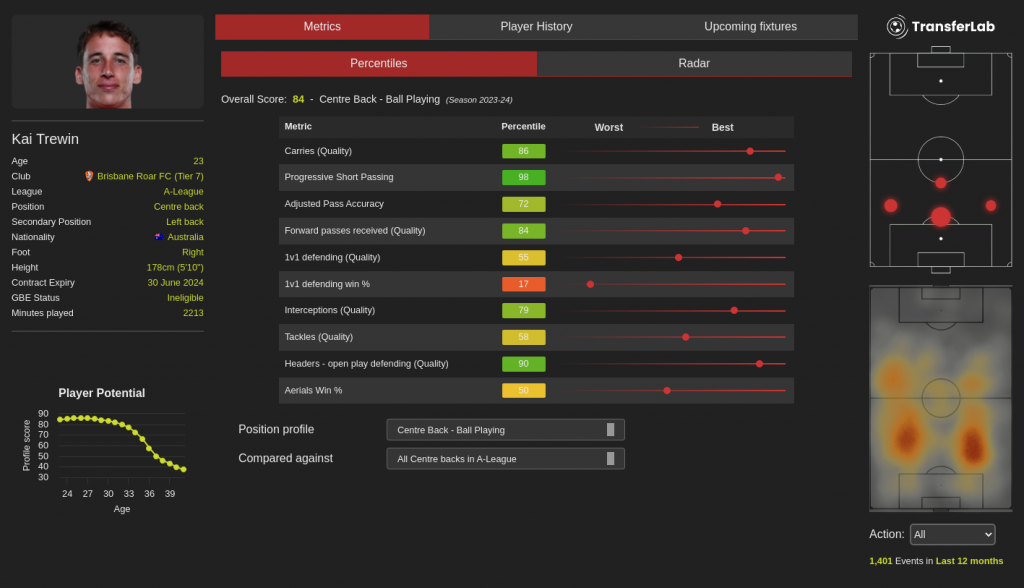
If we instead reduce the age to 26 and younger and up the minutes played threshold to 500, we can find some more interesting players.
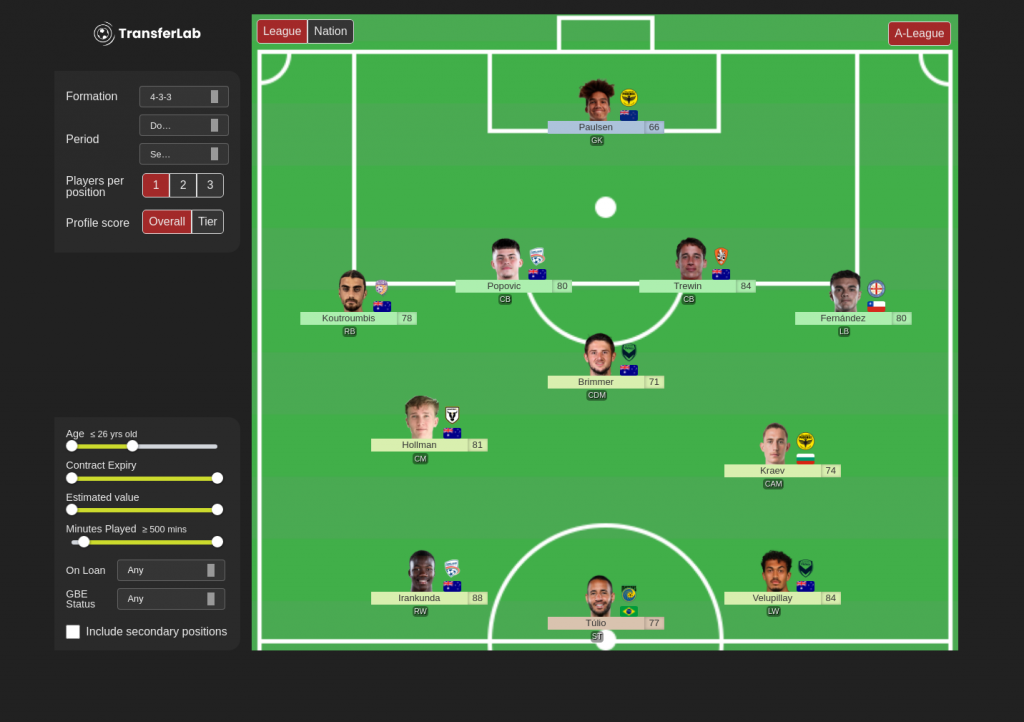
The first player who leaps out is Nestory Irankunda, the next big thing of Australian football, who has been written about here by SCOUTED FOOTBALL. Irankunda will be joining Bayern Munich in the summer and is an outstanding prospect who could reach elite levels.
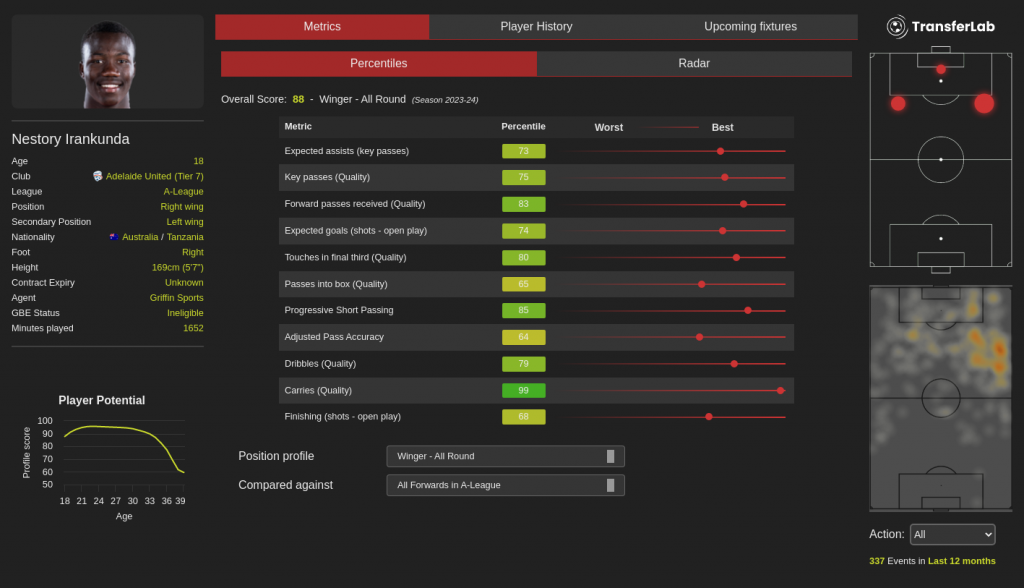
Another player who has moved on already is Alexander Popovic, the young former Adelaide centre back, who has joined Gwangju in the Korean K-League. Popovic profiles as mobile centre back who excels at carrying, gets into forward positions well, and also shows up well for 1v1 defending quality and open-play defensive headers. At only 21, his move to the K-League means he remains in Band 5 and is certainly worth monitoring for upper level Scottish clubs or sides in the English Championship.
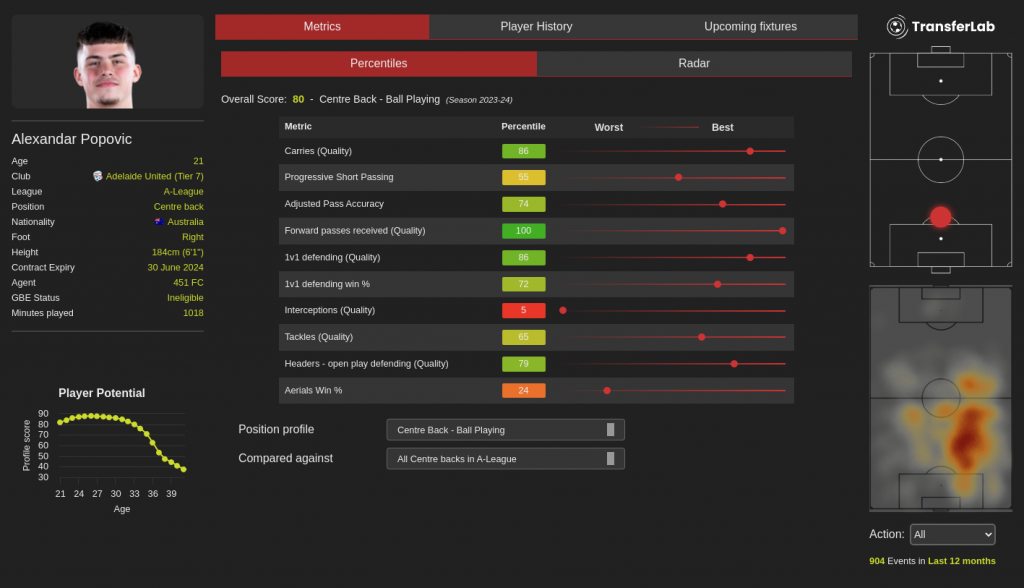
Macarthur FC midfielder Jake Hollman, who has won the domestic Australian Cup and the international AFF U19 Championship is still in the A-League and profiles as an attacking, press resistant midfielder. The profile below is shown vs players of the level of Scottish Premiership sides like Hearts or the lower end of the Championship in England. Here he still profiles as elite for dribbles, tackles, and expected goals, showing that Hollman could potentially move to these leagues and immediately provide genuine quality.

Further forward, wide attacker Nishan Velupillay is a former Australia Cup and Melbourne Victory Young Player of the Year winner. At 23-years-old he is still some way short of his peak and could play comfortably at mid Scottish Premiership level or the middle reaches of the English professional game.

Lastly, a player who didn’t quite make the Best XI due to being nudged out by Hollman is New Zealand international Ben Old. Old is only 21 and a dynamic ball-carrying, dribbling free 8. He is in the top 2% of A-League midfielders for expected goals and assists, dribbles, carries, and key passes. Defensively less impressive, he is none the less a superb prospect who is likely to become a key international for the All Whites.
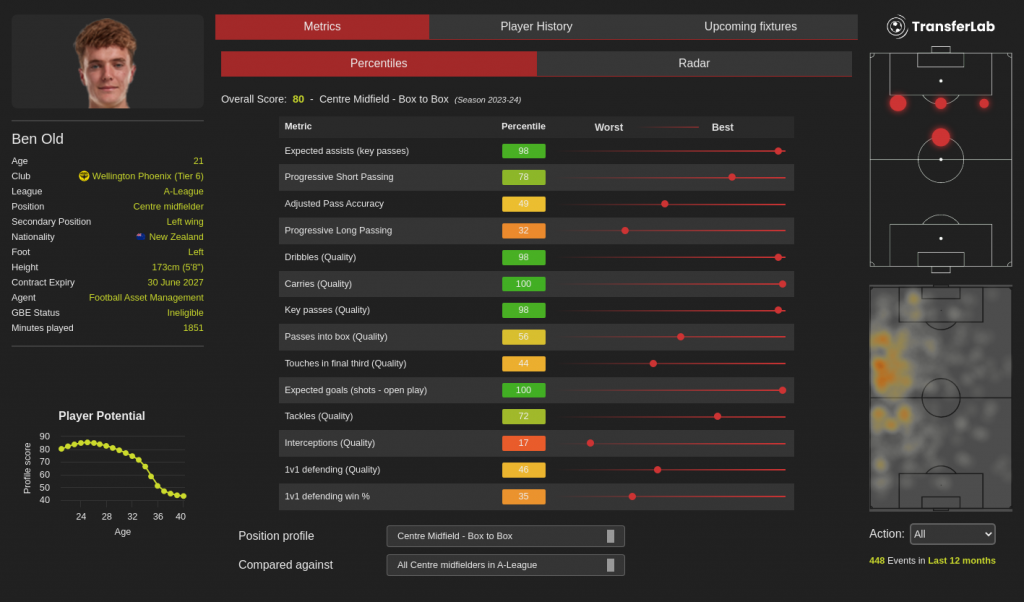
This shows that development talent clearly exists in the A-League, but Velupillay, Hollman, and Old would all qualify for an ESC under the old international rules.
There are a number of players in the 23-27 bracket, though, who would not, and needed the Banding change to become available to English clubs. League and AFC Cup winner Joshua Nisbet can play anywhere from central midfield to striker and has yet to win any international recognition. Probably best deployed as a shadow striker, he could bring quality and top-level competition experience to any club outside the English top flight.

Alex Rufer (27, Wellington Phoenix) has been capped but not recently enough to qualify via international ESC. He’s a defensively excellent six who would more than hold his only in the Scottish Premiership or the lower reaches of the Championship.
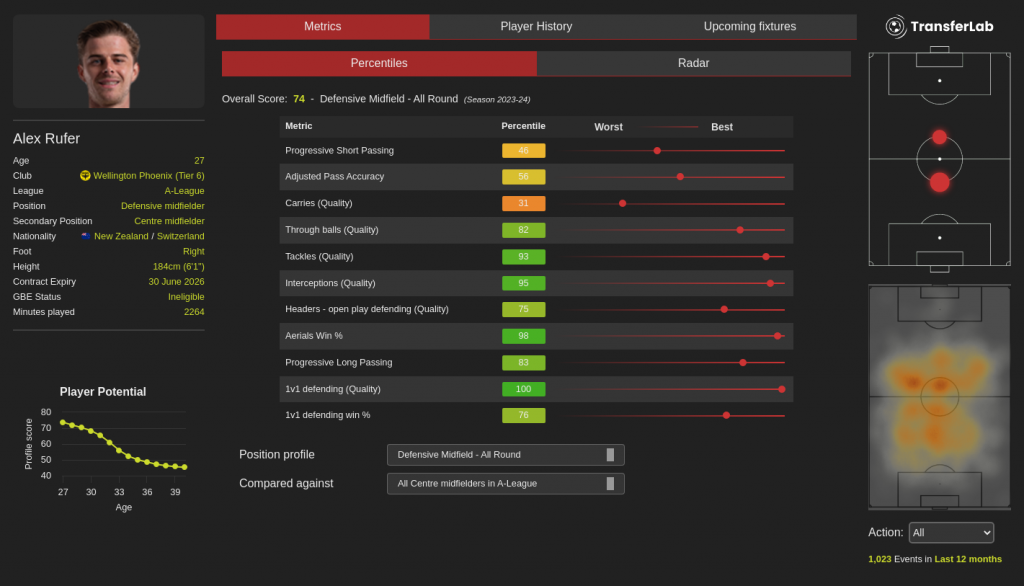
And lastly, attacking right back John Koutroumbis is due to leave Perth Glory at the end of his contract in July – he may not yet have a club lined up. An aerially dominant full back who defends on the front foot and adds real quality with his passing, Koutroumbis is again the level of player who could do very well in Scotland or the middle of the English professional game.

Conclusion
Football in the A-League is improving. Improved academy set-ups have elevated the quality of players coming through, while Australia’s climb up the FIFA rankings shows the general health at the elite level. A-League clubs are yet to impose themselves on continental competition, with Western Sydney Wanderer’s 2014/15 AFC Champions League win and Central Coast Mariner’s 2023/24 AFC Cup victory the only two continental triumphs by an A-League side so far. But the league still has plenty of young to peak age talent (and a few older pros who can still more than work in lower level British football – hello Charlie Austin).
The change to place the A-League in Band 5 means that clubs, especially at the lower end of the Championship, and the upper levels of League One and the Scottish Premiership and Championship, do not have to rely on trying to poach the best young talent but can instead scout more widely. It is far more realistic for these clubs to look for the next Kye Rowles, Cammy Devlin, or Maclauay Gillesphey than the next Nestory Irankunda or Garang Kuol and the value that can be derived from players like Hollman, Old, Nisbet, or Rufer could be immense, especially as none are valued at more than around €300k.
Smart clubs need to be across market developments, and keeping an eye on Banding changes can be a good way to get the jump on competitor clubs. Anglophone markets like the A-League are rare and the recent experience of clubs in the SPL especially prove this is a market worth tapping into. And it just got easier.
Analytics FC provides a free GBE calculator to help you check the status of players. You can read more about Analytics FC’s free GBE calculator tool here.
Header image copyright IMAGO / AAP / Joel Carrett




